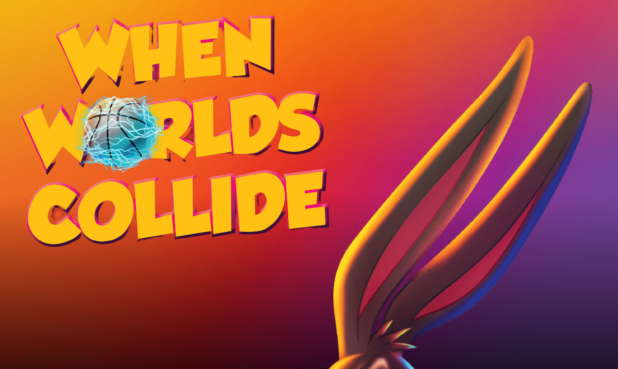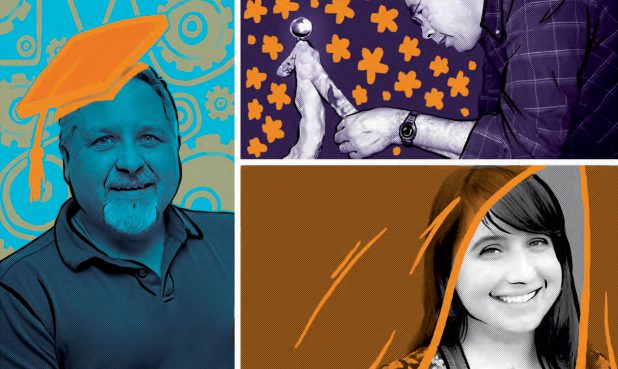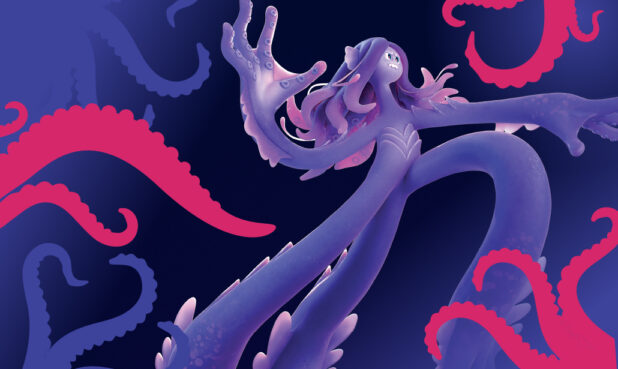A self-described cartoon fanatic, Beck is an animation historian who has written 15 books on the subject and also teaches animation history at CalArts. While some studios have taken the initiative to preserve and restore their old collections, he says, others focus on their new creations and tend to forget the older ones. In addition, many of the older cartoons were aimed at adults. Since some of them are not suitable for children and may contain racist or sexist attitudes, these factors combined have led to their neglect. As a historian, Beck believes they need to be restored regardless of their content because they remain a part of animation history. He’s become acutely aware of how easily these old cartoons can disappear, meeting a fate like the majority of silent-era movies, which were abandoned, left to deteriorate, and are now lost forever.
“Cartoons are just as fragile,” Beck says. If no one preserves the first Loony Tunes or Porky Pig cartoon, he says, they’ll disappear.
With restoration being a costly process ($8,000 to $30,000 dollars per film) and funding limited, choosing which cartoons to preserve presents a dilemma. “It’s a real Sophie’s choice,” Beck says. Once a year he presents a selection to the ASIFA-Hollywood board and makes his case for saving them. He is well versed in the classic libraries of the studios and communicates throughout the year with many archives. Invariably someone will call him with the discovery of a rare nitrate film that needs saving. Just recently the Academy of Motion Pictures Arts and Sciences found a cartoon negative in their library and approached him because they couldn’t find a reference to this film anywhere. ASIFA-Hollywood paid for creating a print after it turned out to be an unreleased UPA cartoon.
Beck tries to focus on rare and historically important cartoons, that will tell a story to future generations about the studio’s work. For example, this year they’re restoring two Puppetoon films which are both unusual. One is unique because in the Paramount 1944 Puppetoon, Bugs Bunny, voiced by Mel Blanc and animated by the studio that made the Warner Brothers’ cartoons, makes a cameo gag appearance.

“It’s too important in the universe of animation history,” says Beck. “It’s a little footnote, but it would kill me if that wasn’t preserved.” The other Puppetoon uses the character of Superman in puppet form. The Superman character was licensed from DC comics at the time, in the ‘40s, and Beck found it exciting to stumble across a forgotten piece of superhero history and bring that back into the world.
Sometimes Beck will approach a studio and inquire about the status of certain cartoons. This is what happened with a rare Max Fleischer cartoon, Raggedy Ann and Raggedy Andy. When he learned that it was not preserved, he set the wheels in motion for its rescue. He considered the film a perfect candidate for restoration because it was unusual, a two-reeler, and in color. It was also a musical and featured a character that most people had heard of—Raggedy Ann.
ASIFA-Hollywood frequently works with Scott MacQueen of the UCLA Film & Television Archive, who spearheads their restoration projects. The restoration they do with ASIFA-Hollywood is all analog film-to-film restoration. Restoring Technicolor is more expensive because each color film frame is a composite of three black-and-white pictures of the primary colors: red, blue and green.
MacQueen says that the Raggedy Ann and Raggedy Andy cartoon had fallen out of distribution possibly because, like so many marginalized cartoons of that era, it wasn’t an ongoing series with characters that are household names, such as Bugs Bunny. He adds that the prints of the film that are out there among collectors are usually on 16 mm. These cheaply made prints were created for TV use in the 1950s and 1960s and are scratched, worn, and completely color faded to shades of pink.
The process UCLA went through with the Raggedy Ann and Raggedy Andy film involved printing the Successive Exposure—black-and-white negative to a master positive called a “Fine Grain.” From that it gets three passes through an optical printer through color filters, to make a color negative which then makes a contact full color print. “The beauty of it is the fine grain master, which is on polyester base, now gives you an archival element that should last 500 years,” says MacQueen. The original camera negatives before 1951 were all nitrate cellulose—which was pliable and strong, but also very flammable and decomposed if not properly cared for. Short cuts in manufacture and bad storage could cause it to decay fairly quickly.

The Raggedy Ann and Raggedy Andy film, as happened with many Paramount cartoons, was sold off for television and packaged into 16mm for TV syndication. MacQueen adds that when they made 16mm printing negatives, the new distributor also removed the original Paramount logos and replaced them with their own. “So all the old TV prints have rather clunky replaced title cards,” he says, adding that fortunately the alterations were made in the TV negative and not the camera negative. Black and white cartoons weren’t so lucky– they would just reshoot a new card, cut off the original, slap on a new card that said U.M. & M. TV Corporation. So when he’s restoring black-and-white cartoons there’s the added challenge of trying to get back to authentic main and end titles.
While classic cartoons tend to be about seven minutes, the Raggedy Ann and Raggedy Andy was a 17-minute special. MacQueen explains that Paramount and Fleischer Studios occasionally did these two-reelers which, in the cartoon world at that time, were considered epics. For such a project, if the elements are orderly, it can take anywhere from several weeks to maybe a month or two to complete the restoration. The process can take longer because of limited lab space availabilities—there are only two or three working analog film labs left in Hollywood.
Soundtracks are separate rolls of negative that have been printed onto the film in a different printing pass from the picture. Nowadays, Macqueen explains, they will try to make a track print from that, if it exists, and then digitally do very careful noise reduction without sacrificing the brilliance and frequency response of the original recording. The original unprocessed track is archived so if there’s better technology in the future, they still have an ‘x-copy’, a one-to-one of the original without any changes. In the case of Raggedy Ann and Raggedy Andy, the restoration was straightforward because the negative was in fine shape. It was just a matter of printing it, cleaning up the sound, and waiting for various elements to come back from the lab.
However, projects can be a lot more complicated and challenging. “If you’re working on a subject where you have to mix and match elements from different sources it could take six months.” He recalls a Koko the Clown cartoon called Bed Time (1923) that they restored for ASIFA, which was more complicated because it came off multiple elements. Scenes had been removed from the nitrate camera negative when it was recut for TV in the 1950s. They had full-length 16 mm prints from the 1920s and 1930s that were very degraded in quality and also had a nitrate print from 1922 that had decomposition and losses. Pieces from the secondary materials needed to be used to fill in the scenes that were cut from the original.
Other problems can arise when older nitrate film shrinks due to moisture loss, making it difficult to print. In these instances, specially machined register pins need to be used to engage the sprockets so that the film doesn’t tear or jump—16mm film requires optical printing to enlarge it so it can cut into the same space field as the 35 mm frame. Density and contrast also have to be matched. There are different methods to do a single color printing of a black-and-white negative and at UCLA they were able to replicate the old-fashioned tinting, just like it was done in the ’20s. These are all issues and challenges that can come into play. MacQueen lauds the efforts of ASIFA-Hollywood’s preservation project and the way they’re giving back to their profession, because without them, he says, these cartoons wouldn’t be restored.
While the preservation program has been around for decades, it’s only in the last few years that they’ve been able to renew their restoration efforts. Frank Gladstone, Executive Director of ASIFA-Hollywood says, that the non-profit has reached a point where they’re now spending about $40,000 dollars a year on restoration. From restoring about one film every two years, they now do up to three or four films per year. Funding comes from the organization’s membership, studio sponsors and corporate memberships. He adds that “with each passing year it becomes more urgent to do this. Beck finds these things that are on death’s door, so to speak, and if we don’t restore them then nobody is going to see them.”
The aim is to show these rescued cartoons in museums and other venues such as ASIFA-Hollywood’s yearly screening. It’s a labor of love and there’s nothing Beck likes more than showing a restored cartoon to an audience. As a historian and collector he’s grown used to faded, muddy prints that looked horrible. The restored films look the way they did when they were first released with wonderful, vibrant colors.
Beck believes that showing the old films inspires the younger generation of new artists. He points out that many of today’s cartoons are throwbacks, inspired by earlier works. The recent video game, Cuphead, for example, is “totally inspired by Max Fleischer and the old cartoons of the 1930s. We need to see that history, we need to be inspired by it and that’s what we’re doing with our restoration program.” Gladstone echoes this sentiment: “We do it because we feel we’re being good stewards of that particular art form—we don’t want to forget them.”




